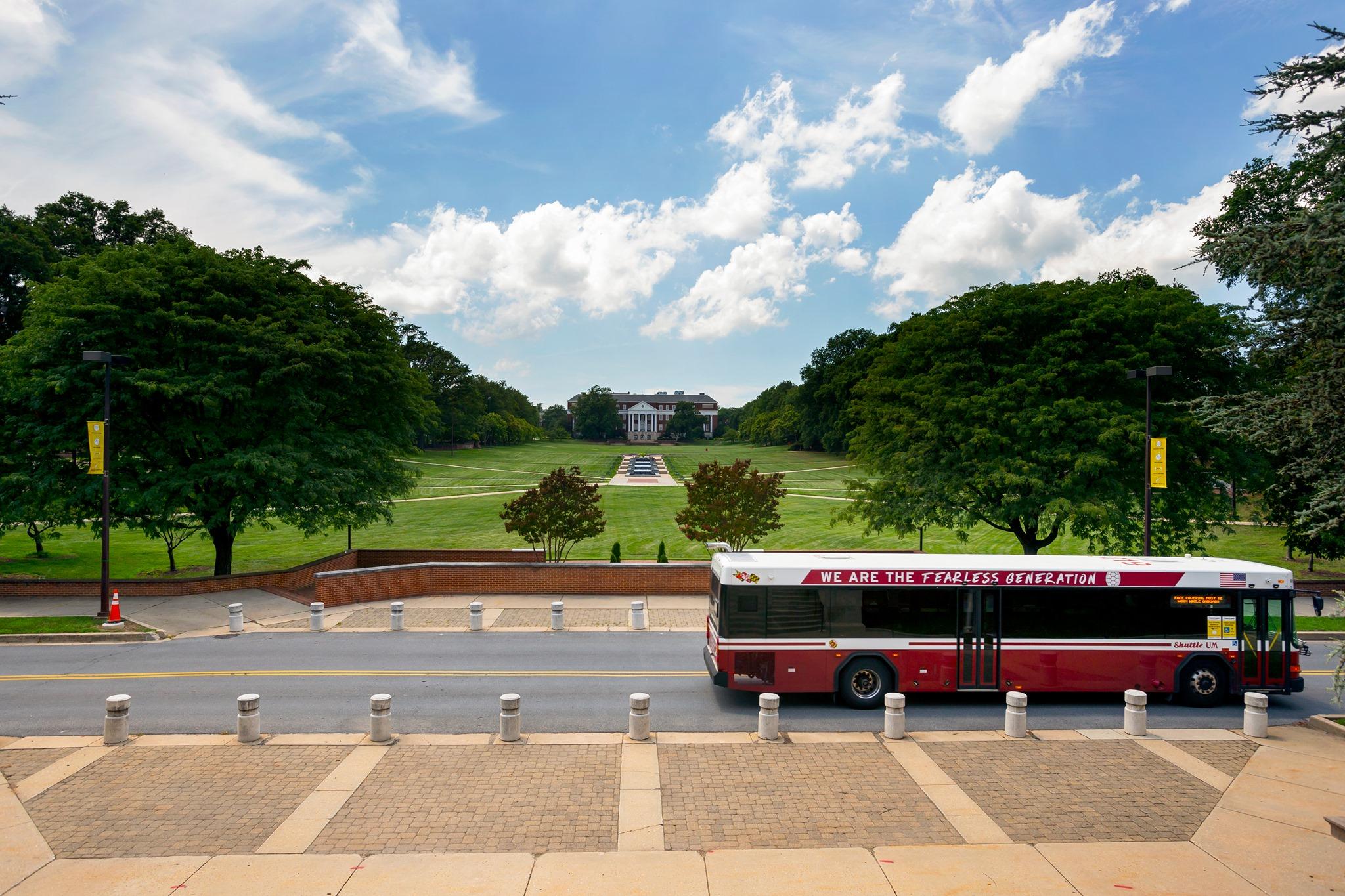
Transportation at the Intersection of Sustainability, Safety, and Learning
DOTS Commitment to Accessible, Sustainable Transportation Opportunities
Feature Article for 2024-2025, by Nicole Pilsbury
A group of students gather at the Chapel Lane bus stop, admiring the blossoming flowers and changing leaves as they wait for the UM 104 bus to take them to the College Park Metro station. This singular moment reflects a larger story — one that tells the tale of a campus community utilizing the sustainable transportation network that keeps them safe, connected, and in motion.
Shuttle-UM, micromobility, MetroRail, Metrobuses — all ways tens of thousands of University of Maryland students, faculty and staff harness the methods of transportation offered on campus. As the number of commuter students and employees grows, sustainable transportation options become critical for meeting the community’s transportation needs and supporting the university’s climate goals.
The University of Maryland’s Department of Transportation Services (DOTS) weaves sustainability into transportation initiatives, driving the campus community towards choosing enjoyable and environmentally friendly options. Through educational trainings, engaging events, and customized support, DOTS makes choosing sustainable transportation options safe and comfortable. Accessibility to public transportation allows those both on-campus and off-campus to fully experience UMD and its surrounding areas, while also making a difference in reducing traffic, air pollution and campus carbon emissions.
UMD has made strides to make transportation on and around campus accessible and easy for students, faculty, and staff. Here are some of the ways that DOTS has been able to achieve this:
- Commuting Smart: UMD’s variety of transportation modes make for simple travel to nearby areas.
- Bike Week: For more than 10 years, Bike Week has built community by promoting biking as a mode of transportation.
- Art that Moves You: DOTS and their partners used art as a way to have fun, educational discussions about traffic safety.
- Building the Future of Transportation: UMD has a strong foundation for progressing sustainable transportation options.
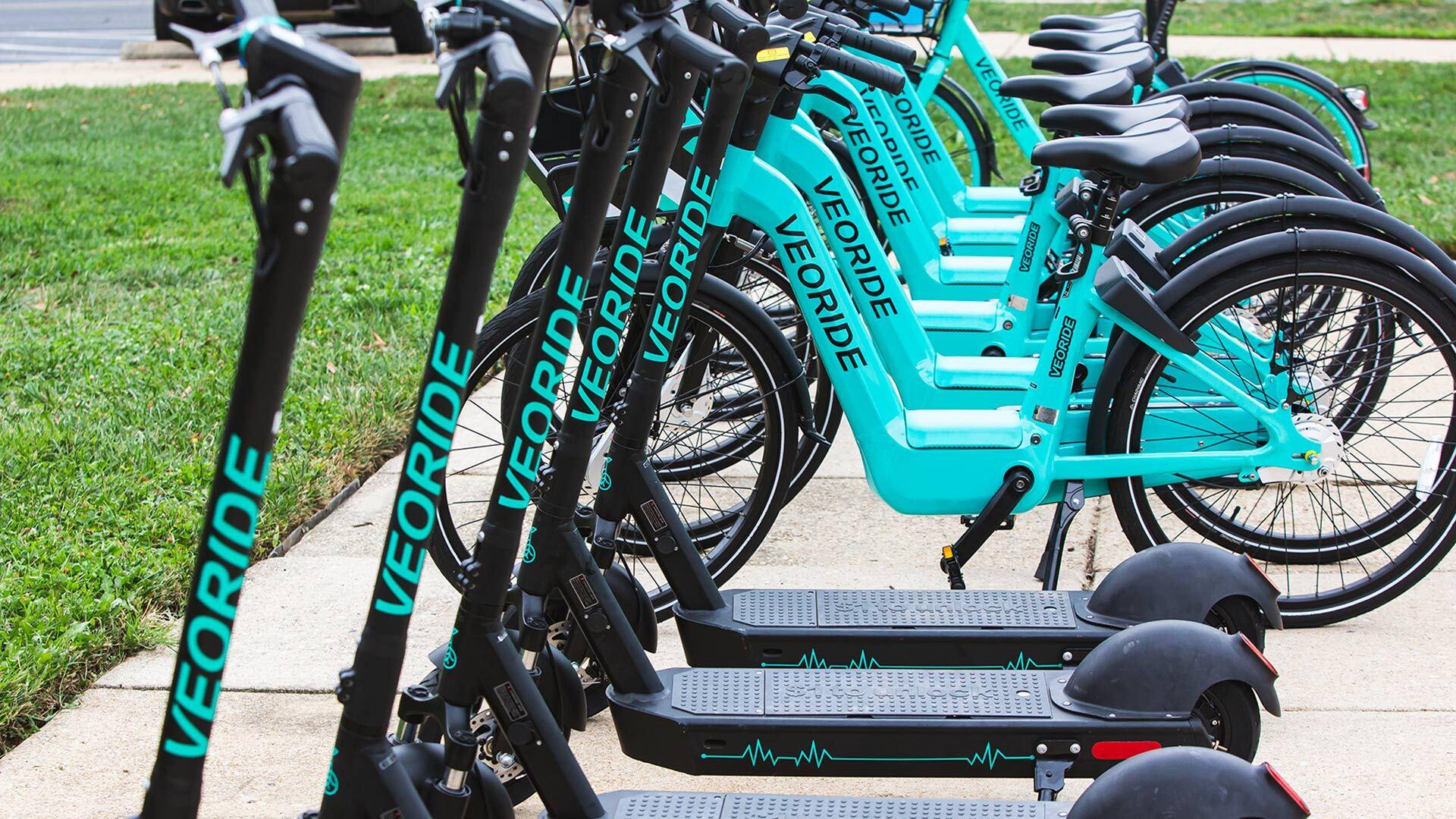
Commuting Smart:
Bikes and buses as a benefit, not a burden
The UMD Department of Transportation Services serves over 56,000 students, faculty and staff each day by encouraging the “transit-rich environment” that is UMD. Opportunities for sustainable transportation in the past few years have expanded through bus rides, micromobility, electric vehicle charging, new bike lanes and more.
The UMD community frequently uses micromobility devices, such as bikes and scooters, as a way to move around campus and other nearby locations. DOTS has adapted to these transportation methods and created guidelines for registering and using micromobility devices– focusing on safety, environmental impact and physical wellness. BikeUMD, a partnership program between DOTS and RecWell, supports bicyclists' protection and safety by offering free bike maintenance, discounted equipment, bike safety classes, and group rides. UMD also has Veos, rentable scooters and bikes, available on campus — making micromobility accessible to all.
UMD recently enrolled in Capital Bikeshare’s membership program, a bicycle sharing system, to allow any student, staff, or faculty a discounted membership of $25 per year. Capital Bikeshare has more than 780 stations, with five of them located in the College Park area. With close access to Capital Bikeshare stations, students can access 8 jurisdictions across the DMV area by bike. 
Shuttle-UM, the transit system for UMD, has local and regional routes that bring riders into and around campus. The transportation service originated as a nighttime security service in 1972. Now, Shuttle-UM caters to 19 routes–with 1.5 million bus rides taken in 2023. The diagram on the right provides an artistic adaptation of the complex Shuttle-UM system.
Metrobuses also run through campus, giving access to nearby cities and other transportation hubs, such as Metro stops and MARC stations. With Washington, D.C. being just eight miles south of campus, access to these transportation options is exciting for those who work or live in the area, along with the rest of the UMD community looking to explore all the Washington metropolitan area has to offer.
People can feel overwhelmed by public transportation complexities, but DOTS is working to make sustainable transportation easy to understand and accessible for all. By using transit apps and campus-provided transportation resources, Terps can navigate College Park and the DMV area using sustainable modes of transportation.
Bike Week:
Gathering the campus community for educational fun
Bike Week, a yearly program that celebrates biking as a method of transportation, builds community among bicyclists and micromobility riders and makes for an educational, yet fun, series of events. Throughout the 10+ years of Bike Week, the campus community has learned about biking resources, safety, and the environmental impact of the transportation method.
UMD is classified as a “Gold Level Bicycle Friendly” campus as a celebration of the amount of cycling resources available to the campus community. The award judges equity and accessibility, engineering of riding locations, educational resources, encouragement and culture, and planning for biking as a safe transportation option. Out of three bicycle-friendly universities in Maryland, UMD is the only one awarded with the Gold Level. The award is given by The League of American Bicyclists, a bike safety advocacy group.
To further promote biking at UMD, African American history tours, monuments tours, and tandem bike presentations were offered as a part of Bike Week 2025, which focused on “Community, Wellness, and Adventure.”
As education and awareness about the importance of biking on campus increases, the campus community embraces biking as a method of transportation. The amount of bikeshare rides, or rides taken on communal micromobility vehicles, increased nearly 800% from 2017 to 2023. Similarly, UMD had 8,534 registered bikes, e-bikes, and e-scooters on campus in 2023-a nearly 400% increase from 2017.
Gold Level Bicycle Friendly University
The League of American Bicyclists, a group of more than 200,000 members, is strengthening communities and improving lives through advocacy groups and bike clubs. They push for a bike-friendly America and bike regulations.
Bike Week 2025
Bike Week 2025 featured events focused on exploration of areas around campus, such as Rosaryville State Park and Washington, D.C. Check out DOTS Bike Week page to learn more about the fun of Bike Week!
Progress Hub Data
The Office of Sustainability's Progress Hub tracks quantitative data related to sustainabilty and reducing carbon emissions. The Progress Hub displays data on Veo rides, bike parking spots, bike repair stations, and more.
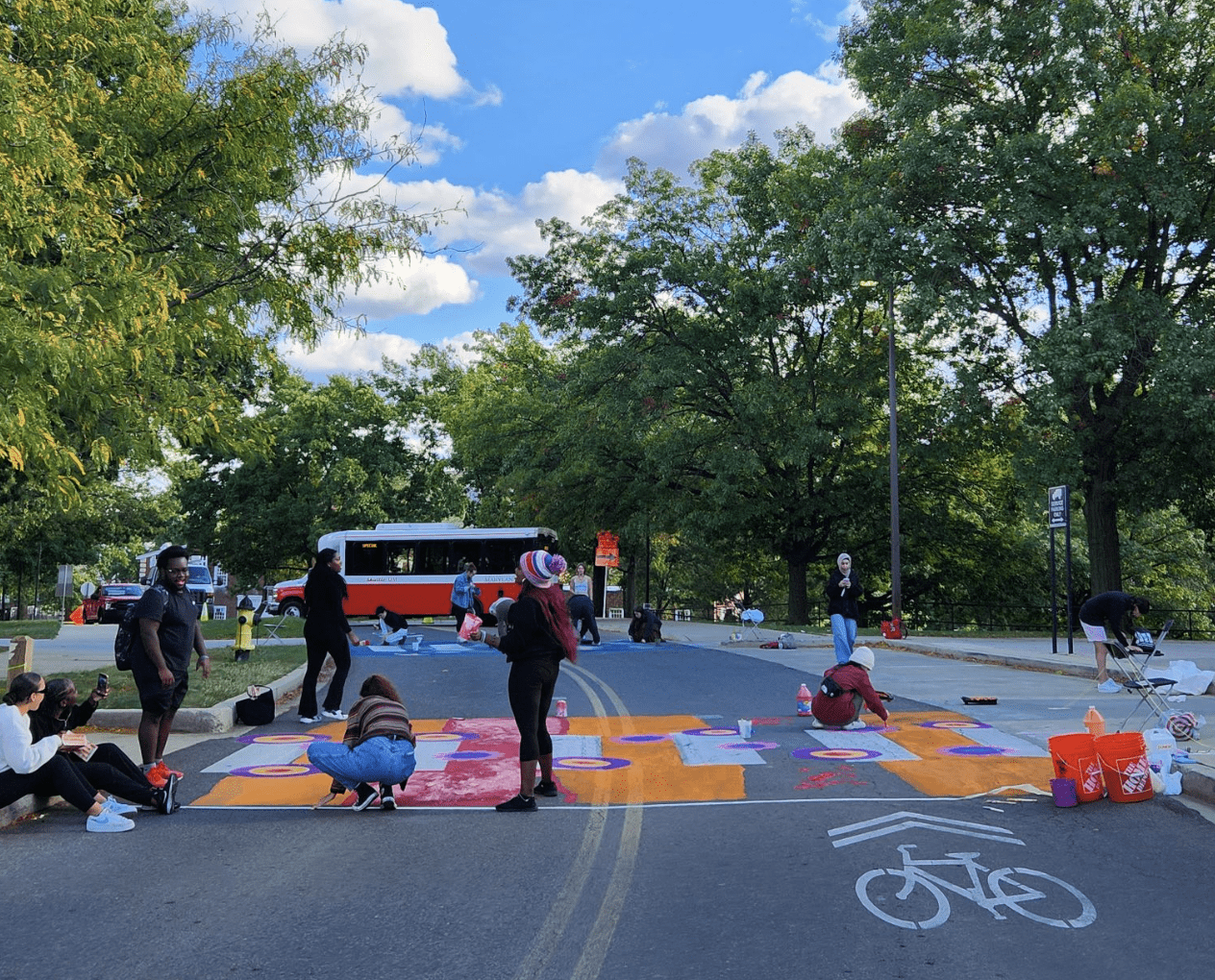
Art that Moves You:
Using art as a transportation demonstration
DOTS partnered with the Arts for All initiative to share transportation information in a way that is appealing to a larger audience, broadening their reach and engagement. Arts for All, launched in 2021, was created to bolster creativity and innovation, while also using art and technology to address social justice issues and grand challenges. Art depictions and installations are used to initiate dialogue and problem solve for duller topics— used specifically by DOTS to highlight transportation issues and solutions.
“Chalk the Walk,” a 2023 community event, enhanced conversations about traffic safety by transforming traditional sidewalks to beautiful art pieces. 40 volunteers came together to advocate for pedestrian safety and the importance of sharing the road. The art pieces, or “visual cues,” stood out to drivers and increased awareness of others on the road during their travels. Aside from highlighting pedestrian safety, the event was an example of volunteers practicing civic engagement in a community space, while also creating an enticing, educational event.
Two hundred and thirty-four family members, in addition to 22 volunteers, participated in the “Youth Pop-up Traffic Garden,” which was a miniature traffic course to help young children and parents practice safe transportation habits, during Maryland Day in 2024. The traffic garden provided a safe learning environment for children on bikes and scooters to practice traffic awareness skills, such as crossing roads and stopping at stop signs. Sixty free helmets were distributed to community members to promote bike safety, along with informational pamphlets. The traffic garden was intended to help children form safe habits while they are young.
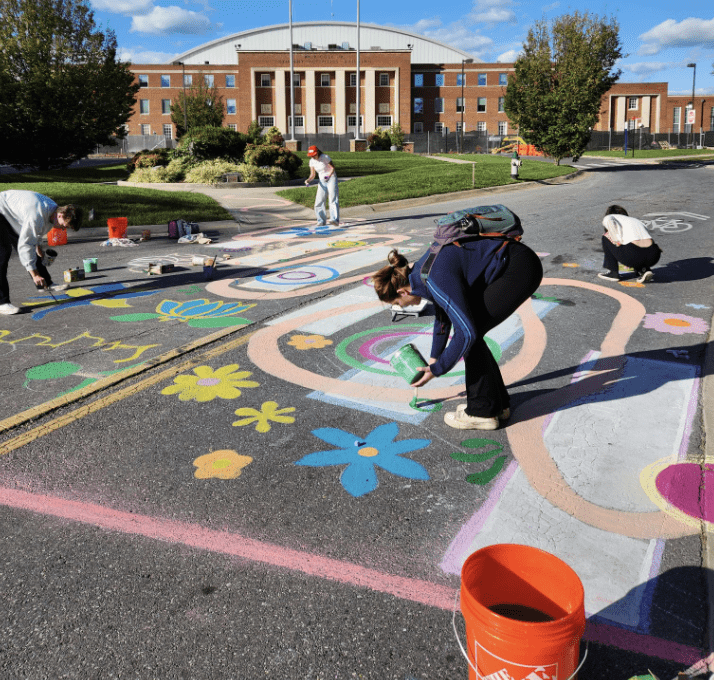
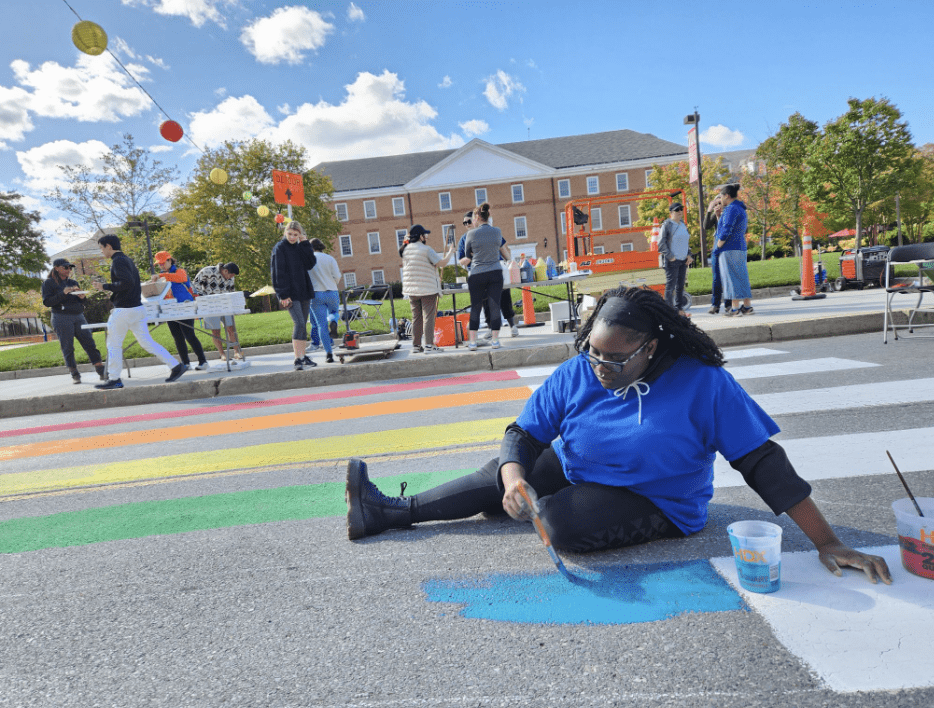

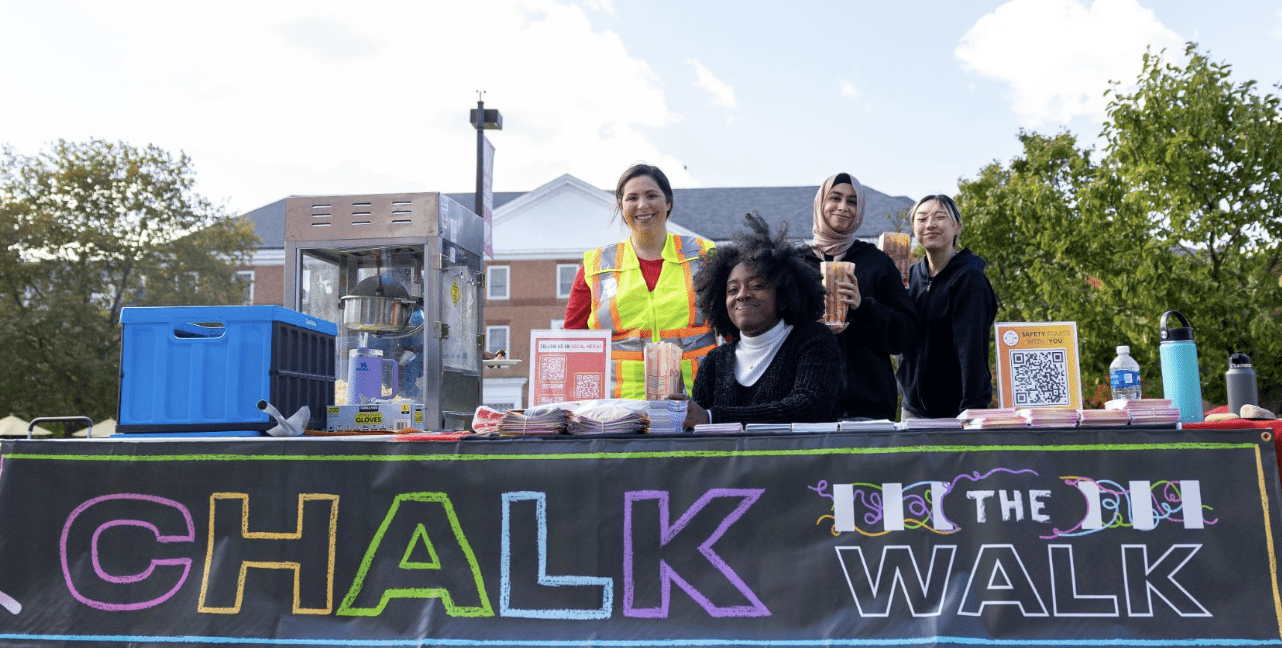
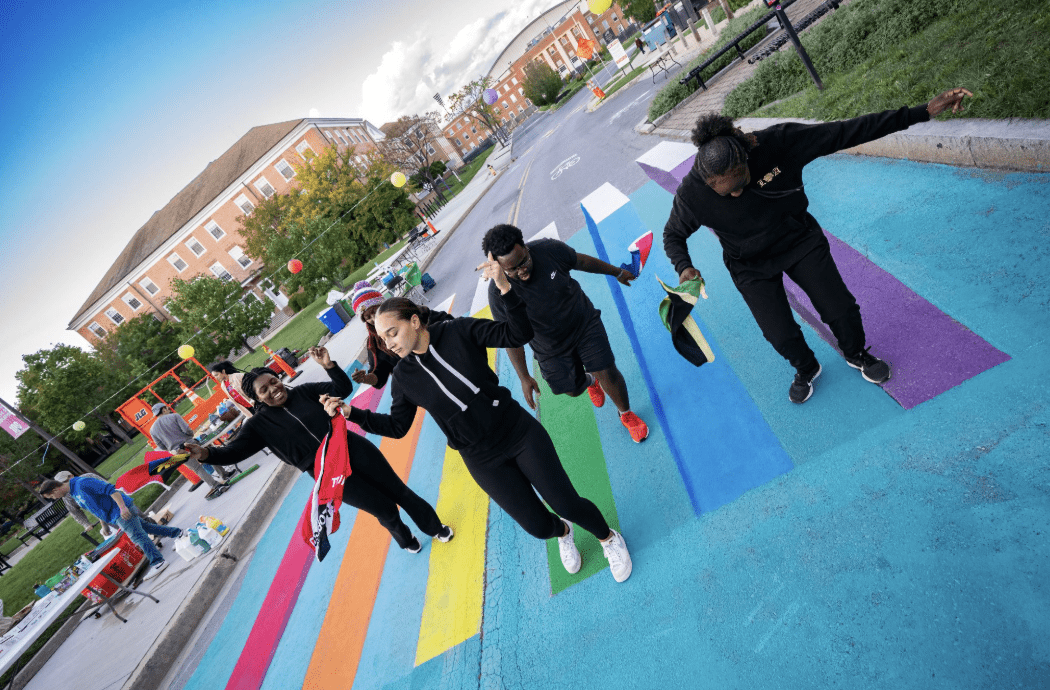
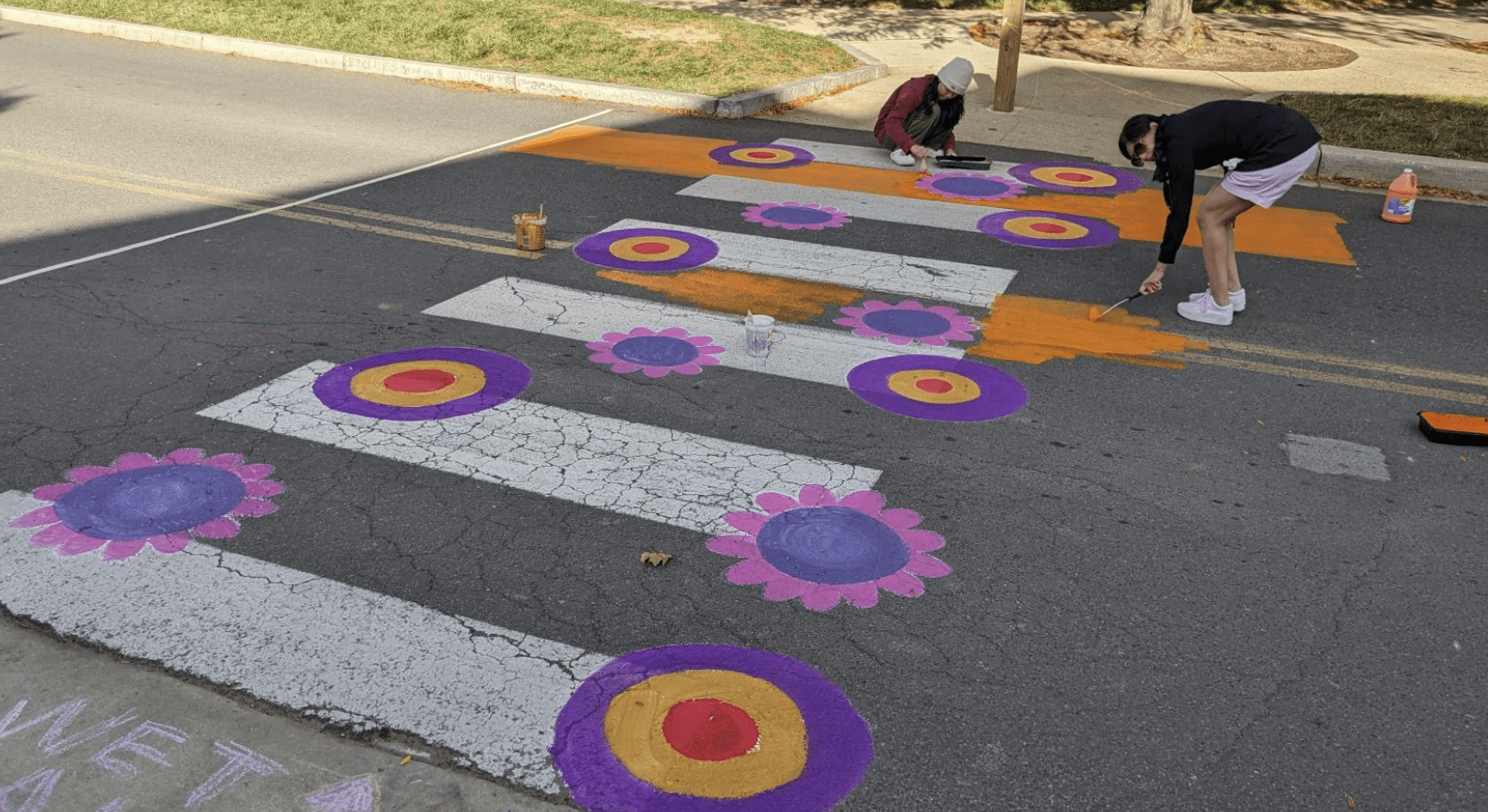
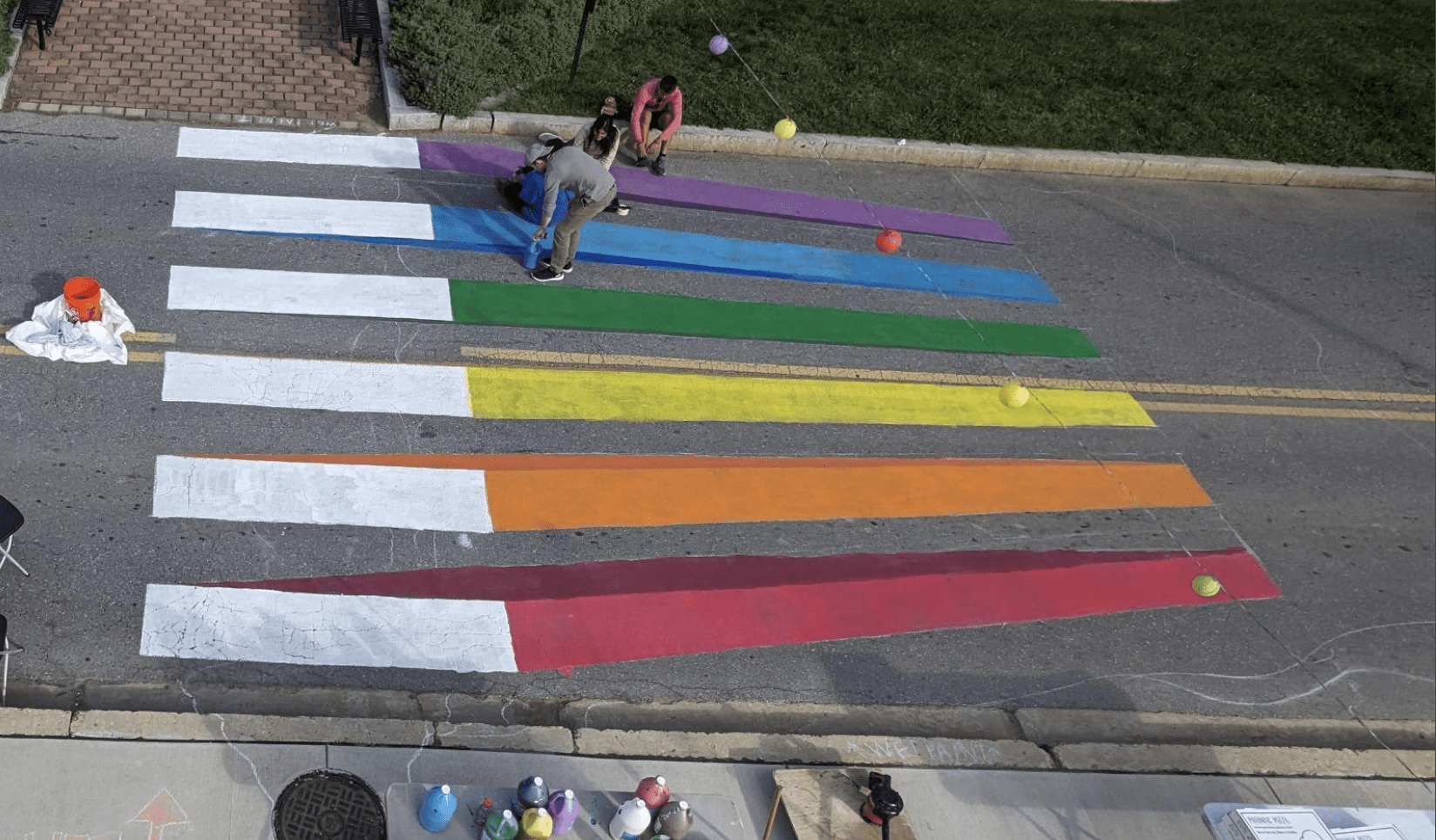
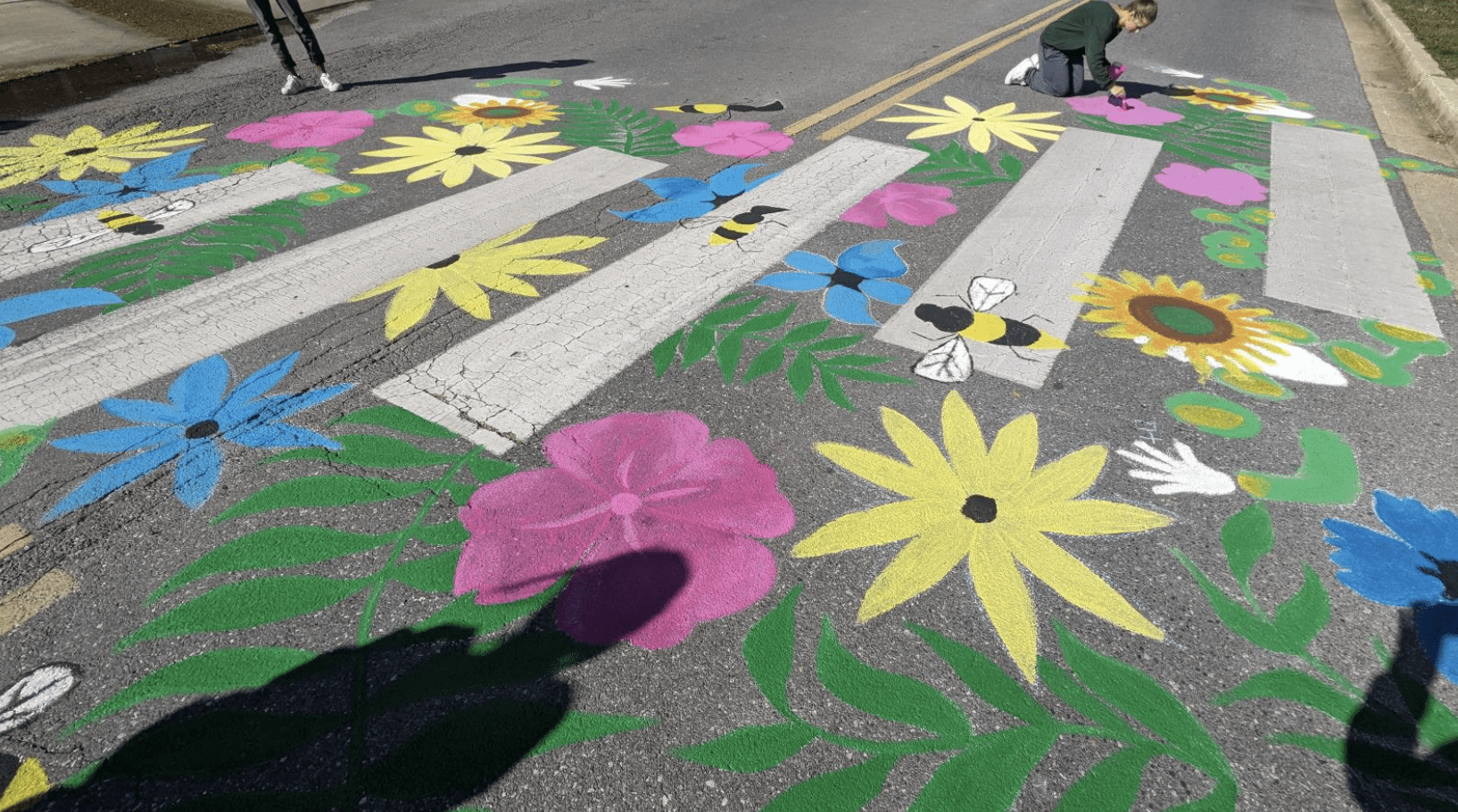
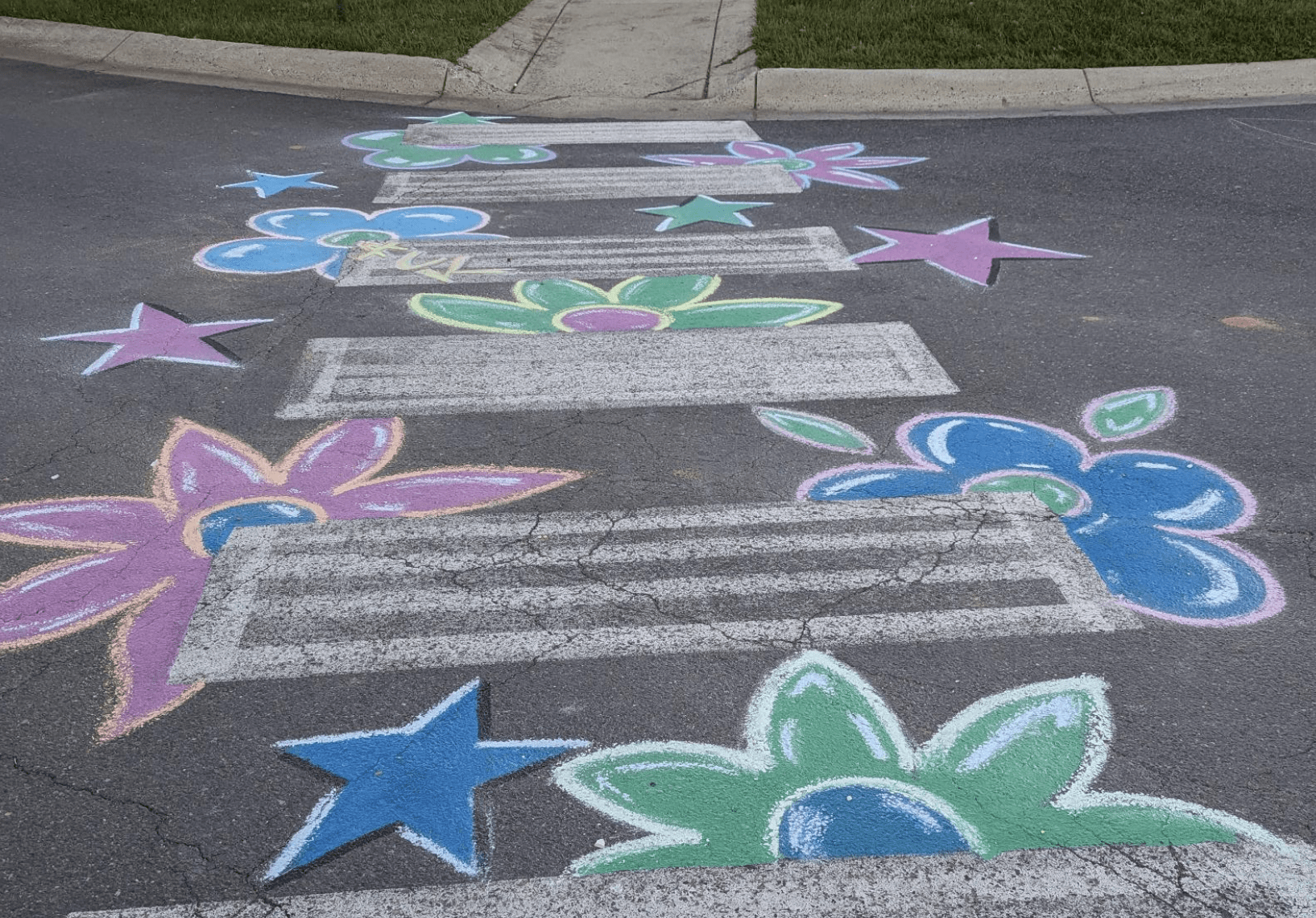
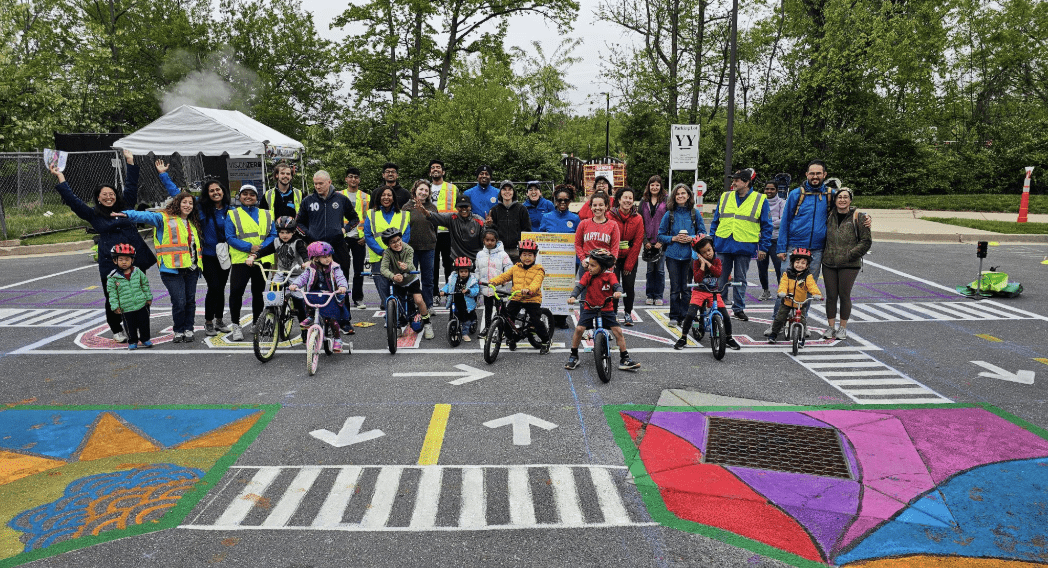
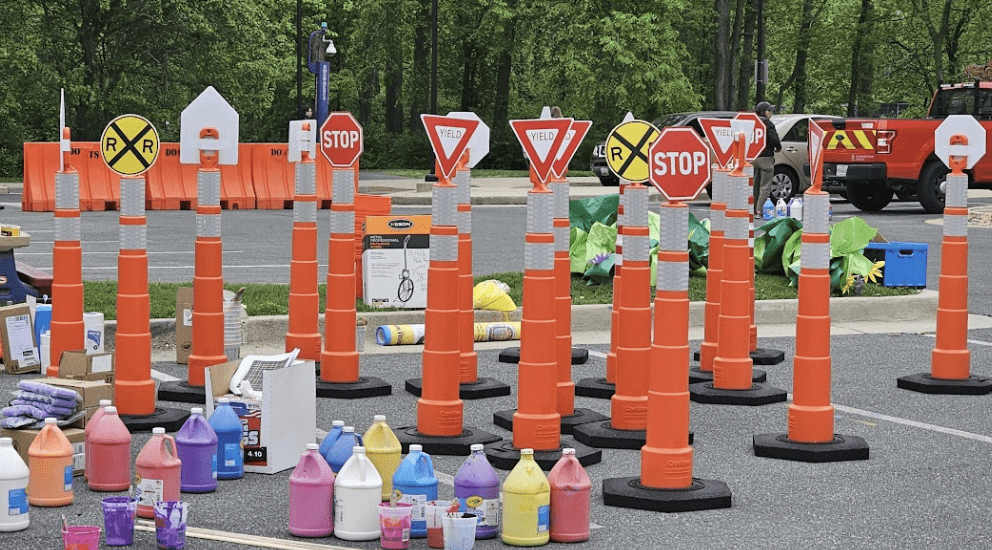

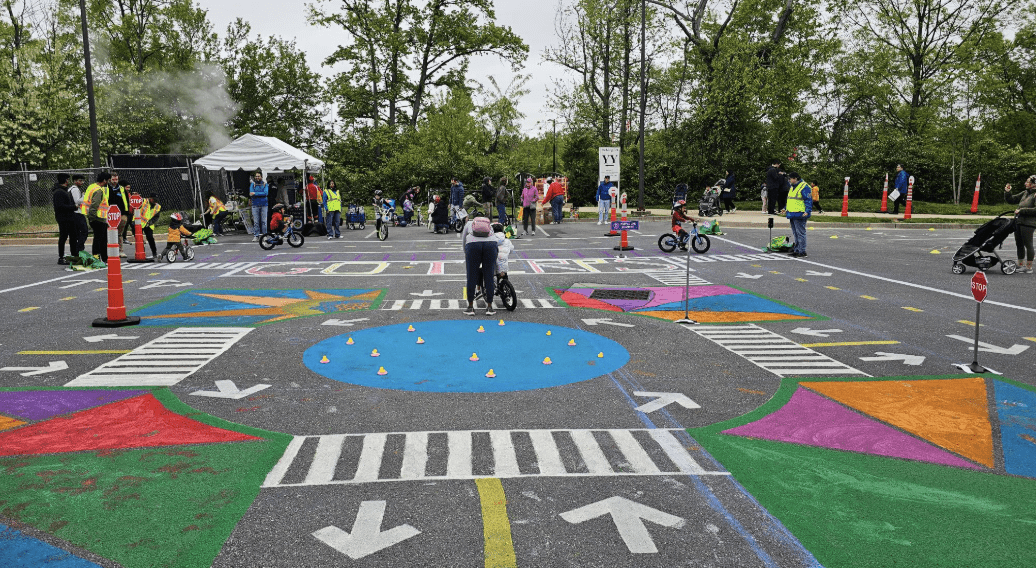

Building the Future of Sustainable Transportation:
Expanding the sustainable baseline DOTS has built
The future of sustainable transportation stems from current transportation practices. People who understand the importance of sustainable transportation now will be able to carry on their knowledge to the future and further improve our transportation systems. By combining education with ongoing investments in transportation infrastructure, DOTS has a lasting impact on Terps’ transportation habits.
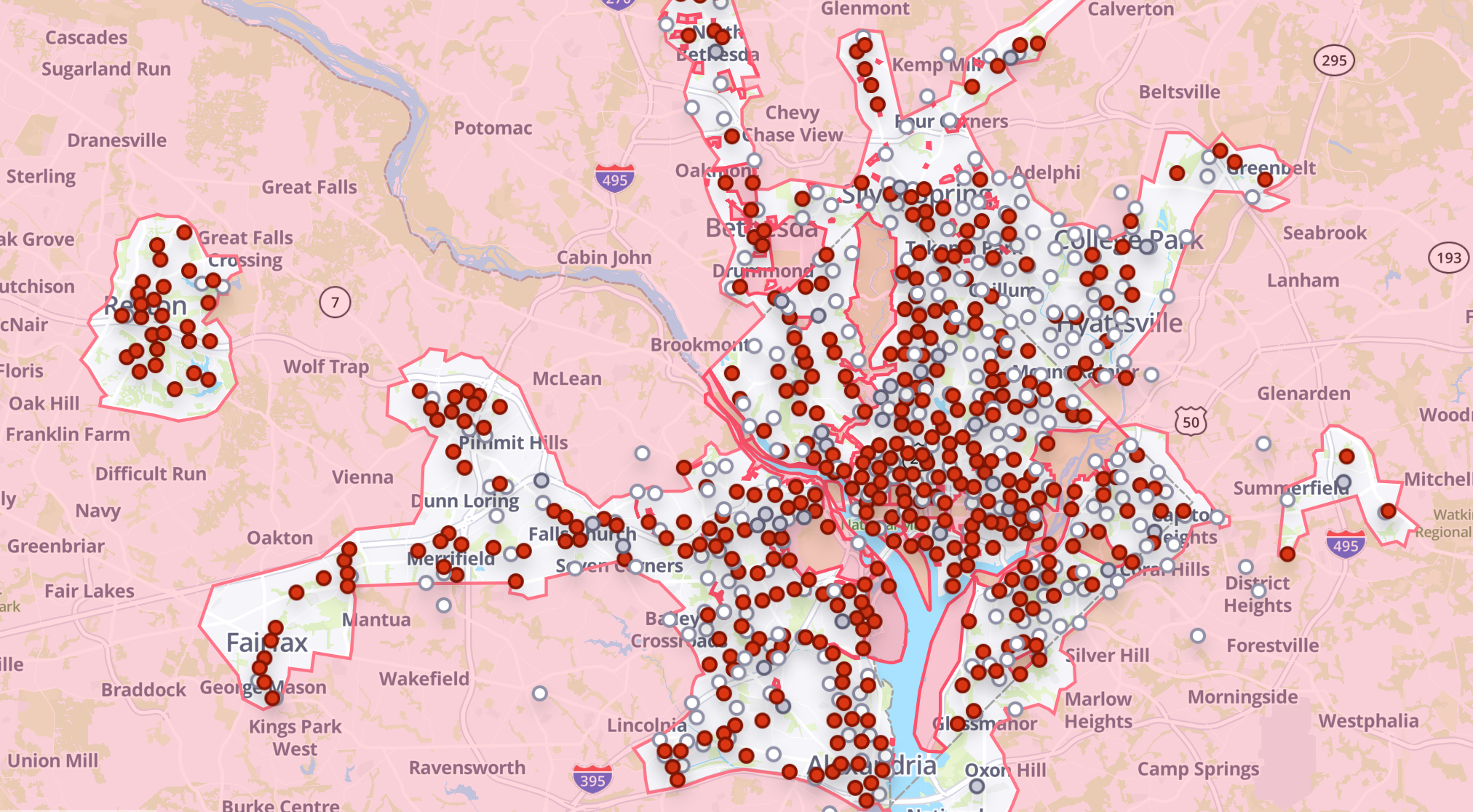 On campus, the Capital Bikeshare program recently expanded the locations of their docking stations, making bikes more accessible to the UMD community. The image to the left, courtesy of Capital Bikeshare’s website, shows the docking stations in the metropolitan DC area. Additionally, two bike paths have recently been built on and around campus as part of the ongoing Bikeways Project, which aims to increase safety and connectivity for micromobility vehicles over the next several years.
On campus, the Capital Bikeshare program recently expanded the locations of their docking stations, making bikes more accessible to the UMD community. The image to the left, courtesy of Capital Bikeshare’s website, shows the docking stations in the metropolitan DC area. Additionally, two bike paths have recently been built on and around campus as part of the ongoing Bikeways Project, which aims to increase safety and connectivity for micromobility vehicles over the next several years.
UMD received a nearly 40 million dollar grant to purchase 35 electric buses, replacing the current diesel buses. The grant also covers chargers to refuel the bus batteries and other associated infrastructure. The fleet will be in operation as early as 2026, and will replace nearly 75% of the current bus fleet. Similarly, electric vehicle chargers have expanded from 26 locations to 50 locations. UMD has set a goal to have all electric vehicles by 2035 — meaning this is just the start of an eco-friendly transition.
The expansions we are seeing now set the standard for the future of sustainable transportation, making it necessary that these transportation modes receive the support they deserve.
Developments in technology across the sustainability field provide endless possibilities for the future of transportation and opportunities for students, faculty, and staff to get involved. Today, we marvel at the arrival of the fleet of electric buses — who knows what the future will bring?
The transportation opportunities available to UMD personnel give access to a whole new world of opportunities and places to explore. The College Park Metro Station, Shuttle-UM, Metrobuses, micromobility and other modes of transportation work together to create an efficient, sustainable transportation network, and a foundation for the future of transportation.
